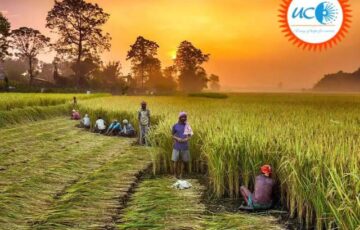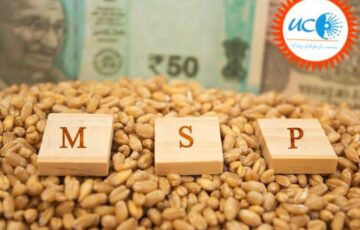Q. There is a view that the current agricultural policies in India are biased against rainfed agriculture. Comment. Also, identify government initiatives in this regard.
Approach:
- Give a brief introduction of rainfed agriculture and its importance.
- Write about biasness of the current agricultural policies against rainfed agriculture.
- Highlight the steps taken to rectify this biasness.
- Conclude accordingly.
Answer:
- A region is classified as rainfed if assured irrigation is not provided to the majority of the net sown area. It relies on rainfall for irrigation. These areas generally receive an annual rainfall of less than- I00 cm which may be highly erratic, unpredictable and variable in time and space.
- About 61 percent of India’s farmers rely on rainfed agriculture and 51 percent of gross cropped area is under rainfed farming. These areas contribute significantly to the country’s food production. They account for 88 percent of pulses and 40 per cent rice production in the country.
- However, current agricultural policies seem to be biased against rainfed agriculture, which is evident from low income of farmers, increasing number of suicides among farmers in the region and higher percentage of degraded land in the region.
This biases can be discerned from following factors:
- Quantum of investment: Per hectare government investment in rainfed areas is much lower than that on irrigated land crops.
- Lower Investment on infrastructure: Lands irrigated through big dams and canal networks get a per hectare investment of Rs. 5 lakh as compared to only Rs. 18,000- 25,000 per hectare in rainfed areas.
- Low procurement of crops grown in rainfed areas: When it come to procurement, over the decade between 2001-02 and 2011-12, the government spent Rs. 5.4 lakh crore on wheat and rice (irrigated areas).
- Whereas on coarse cereals: Which are grown in rainfed areas, only Rs. 3,200 crore worth of procurement has been done in the same period. Farmers in rainfed areas receive 40% less of their income from agriculture in comparison to those in irrigated areas.
- Nature of investment: Flagship government schemes, such as seed and fertiliser subsidies and soil health cards, are designed for irrigated areas and simply extended to rainfed farmers without taking their needs into consideration.
- Negative impact on rainfed farms by extension of other schemes: Many hybrid seeds notified by the government scheme need plenty of water, fertilizer and pesticides to give high yields and are thus not useful to most rainfed farmers. Commercial fertilizers simply burn out the soil without sufficient water.
However, the government has also taken various initiatives to specifically focus on the rainfed areas.
- Revitalising Rainfed Agriculture Network: It was formed in 2010 as a pan India network of more than 600 members, including eminent academics, policy makers, farmers and civil society organisations that work to influence public systems, policy and investments for productive, prosperous and resilient rainfed agriculture. It publishes the Rainfed Agriculture Atlas.
- National Mission for Sustainable Agriculture (NMSA): It is envisaged as one of the eight missions outlined under National Action Plan on Climate Change (NAPCC). The major thrust is on enhancing agriculture productivity especially in rainfed areas focusing on integrated farming, soil health management and synergizing resource conservation.
- Rainfed Area Development: It focuses on Integrated Farming System (IFS) for enhancing productivity and minimizing risks associated with climatic variability.
- Focus on micro irrigation: All the Centrally Sponsored Scheme have been subsumed under Pradhan Mantri Krishi Sinchayee Yojana (PMKSY) and implemented as ‘Per Drop More Crop’ component of PMKSY. There is a need to have a separate policy orientation for rainfed regions, provide incentives to boost productivity in the region and various other help to be delivered so that the true potential of the rainfed agriculture can be realized.







